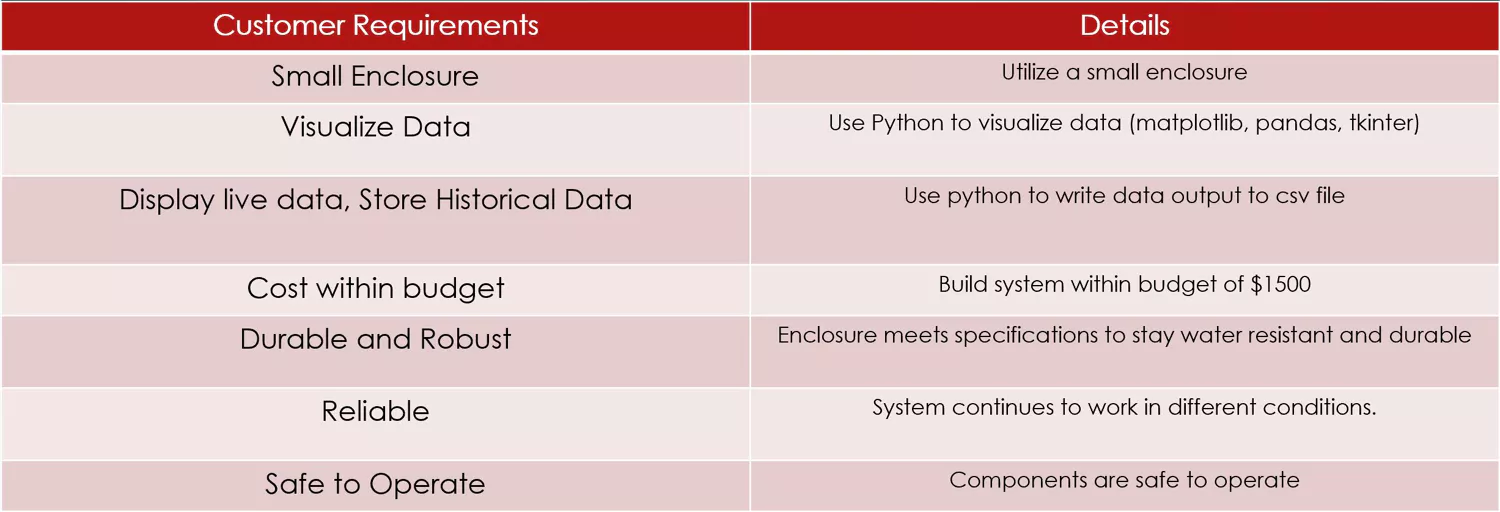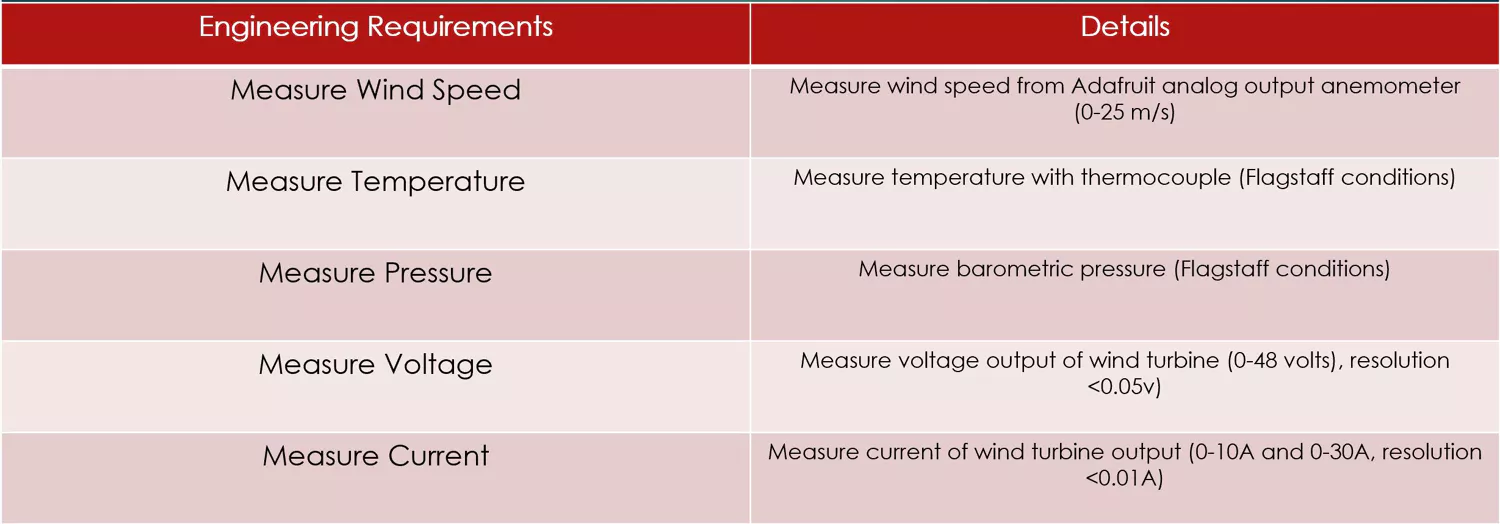

Project Description
The project assigned to the team is a Point of Common Coupling (PCC) Wind Turbine Data Acquisition system. The duration of the project is from May 30, 2022, to December 16, 2022. The goal of the project is to get voltage and current data directly from a wind turbine, while also collecting other data from a temperature probe, pressure sensor, and a cup anemometer.This project is important to the sponsor because it will help with creating clean energy from wind for the renewable energy industry. This is done by creating power curves which will show how different amounts of power are created from different wind conditions. After completing this project, an advanced control system will be created to measure and acquire data from the wind turbine.
Customer Requirements
There are six customer requirements of the design process: small enclosure, low cost, easy to read display, convenient to store/load data, adjustable, downloadable to .csv file, cost within budget, durable and robust design, reliable design, and safe to operate. The customer requirements are generated based on the team discussions and client meetings. They effectively reflect the expectation of both the client and the customer.
Small enclosure makes the design easy to operate and convenient to use. Low cost is important since the team is asked to find an alternative for the expensive software. Easy to read display enables the data on multiple sensors are gathered in time. Convenient to store data makes the team be able to observe the trend of data throughout the whole project. Adjustable means that the team can directly measure the data from the wind turbine outside the lab. Csv files are important to the Raspberry Pi OS and programming for the sensors.

Engineering Requirements
There are six engineering requirements of the design process: measure wind speed (cup anemometer 0-25 m/s, 0-8000rpm), measure temperature (Flagstaff, AZ conditons), measure wind turbine voltage (0-48v, <0.05v resolution), measure wind turbine current (two ranges, 0-10A, 0-30A, <0.01A resolution), measure air pressure (Flagstaff, AZ conditions), and display data using python and other inexpensive software. The engineering requirements are generated through client meetings and are modified based on the customer needs. 
DISCLAIMER: This report was prepared by students as part of a
university course requirement. While considerable effort has
been put into the project, it is not the work of licensed
engineers and has not undergone the extensive verification that
is common in the profession. The information, data, conclusions,
and content of this report should not be relied on or utilized
without thorough, independent testing and verification.
University faculty members may have been associated with this
project as advisors, sponsors, or course instructors, but as
such they are not responsible for the accuracy of results or
conclusions.